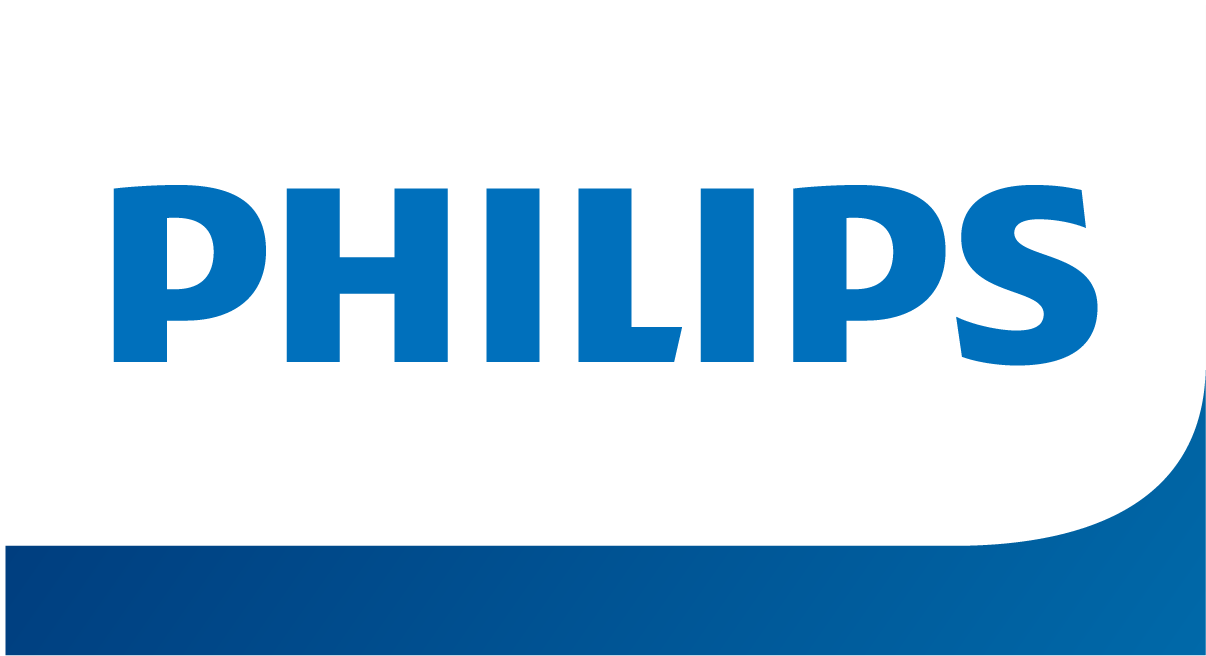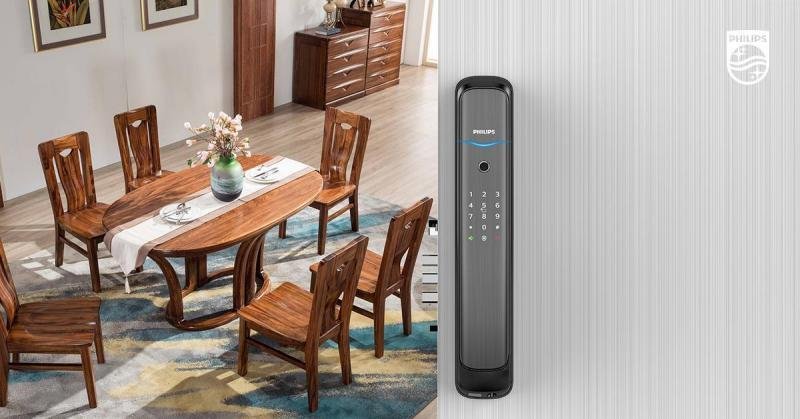A Z-Wave smart lock is a digital lock that uses Z-Wave technology for secure and convenient home access. So, what is Z-Wave smart lock? With Z-Wave, you can control your lock remotely and integrate it with other smart home devices. This guide will explain how these smart locks work, their features, and their benefits.
Key Takeaways
- Z-Wave technology operates in the 800-900 MHz frequency range, providing a reliable and interference-resistant communication method for smart locks and other smart home devices.
- Z-Wave smart locks feature keyless entry, remote control, enhanced security protocols, and long battery life, making them ideal for residential and commercial applications, including vacation rentals.
- Z-Wave smart locks offer easy control through user-friendly apps and integration with smart home devices, allowing straightforward management of home security.
- The mesh network of Z-Wave allows devices to relay signals for improved coverage and compatibility, enabling integration with various smart home systems and enhancing automation capabilities.
Understanding Z-Wave Technology

Z-Wave technology, developed by Zensys in 1999, was designed with a singular goal: to create a robust protocol for home automation. Unlike Wi-Fi and Bluetooth, which often suffer from interference, Z-Wave operates within the 800-900 MHz frequency range, ensuring a more stable and reliable connection for smart home devices and z wave devices. This makes Z-Wave particularly well-suited for applications like smart locks, where reliability is paramount, especially when using a z wave chip.
The power of Z-Wave lies in its ability to create a mesh network with the following features:
- Each device acts as both a transmitter and a receiver, relaying signals from one device to another.
- This structure enhances coverage and allows signals to penetrate walls more effectively than traditional Wi-Fi, making it ideal for larger homes and properties. Z-Wave mesh networks are especially effective for covering large multifamily properties or multiple buildings, ensuring smart locks and other devices remain connected across key areas while reducing installation complexity and improving scalability.
- With over 300 companies in the Z-Wave Alliance, interoperability is a key feature, ensuring that devices from different manufacturers work seamlessly together.
At the core of any Z-Wave smart home system is the Z-Wave hub, also known as a controller. This hub connects to your home network via Wi-Fi or Ethernet and acts as the central command for all Z-Wave devices. It manages communication between sensors, locks, lights, and other connected gadgets. With the introduction of Z-Wave Plus, the technology now offers extended range, longer battery life, and faster data transmission—making smart home automation more efficient and reliable.
As a result, Z-Wave technology has become a foundational element in smart home automation, offering dependable and energy-efficient control over a wide range of connected devices.
How Z-Wave Smart Locks Work
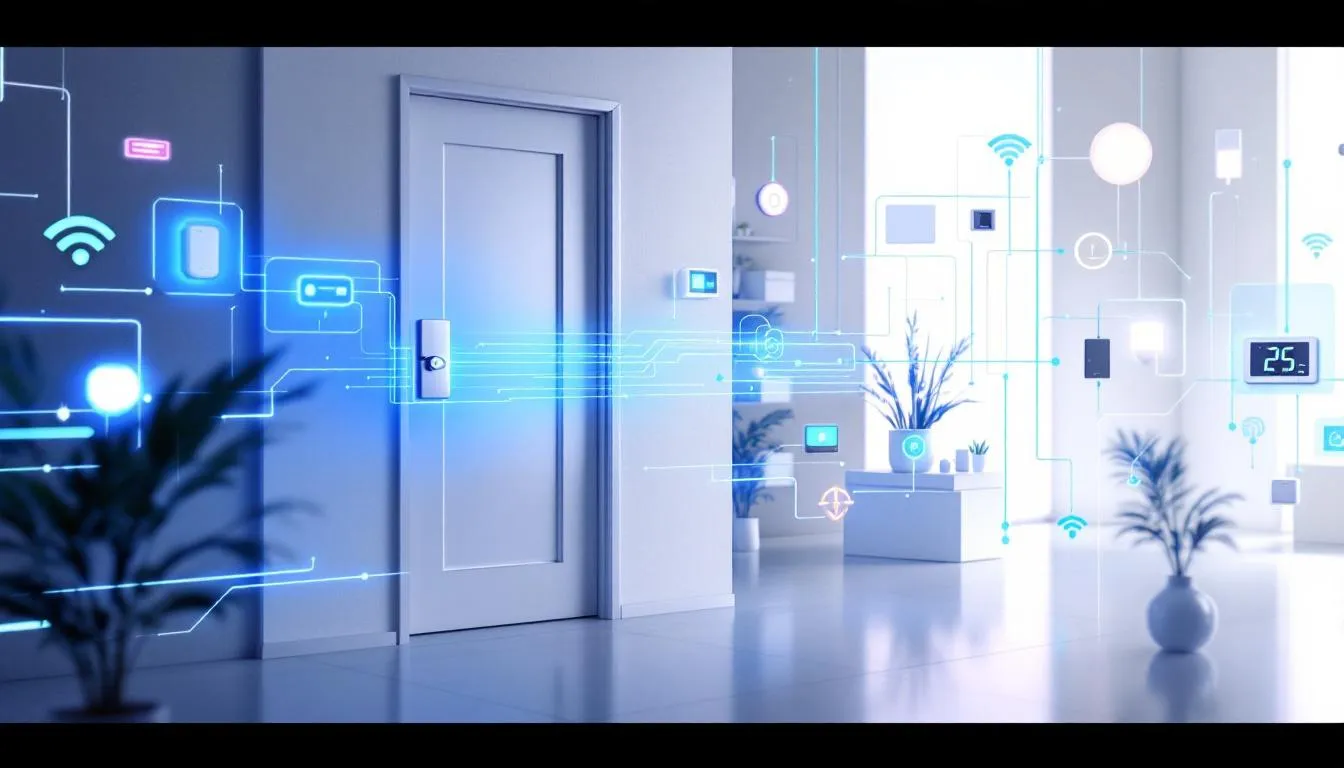
Z-Wave smart locks utilize low-energy radio waves to communicate, forming the backbone of an efficient and secure mesh network. Unlike Wi-Fi-based systems, Z-Wave networks offer superior reliability by allowing each connected device to relay signals across the network. This mesh structure enables:
- Signal routing through other Z-Wave devices if the lock is out of direct range of the hub
- Stable and interference-resistant communication
- Seamless performance even in complex environments
Each Z-Wave device connects to a central smart hub, which links to the internet via Wi-Fi or Ethernet. This hub is the command center—enabling remote control, real-time monitoring, and full integration with smart home or business automation systems via a mobile app.
Z-Wave locks also offer advanced automation capabilities. They can sync with other smart devices—such as security lights, motion detectors, and alarm systems like Ring Alarm—to create a layered, intelligent security ecosystem. For example, a business can program doors to auto-lock after hours or trigger lights and alarms upon unauthorized access attempts.
This makes Z-Wave smart locks an ideal solution for commercial environments, where stable connectivity, remote management, and scalable automation are essential.
Key Features of Z-Wave Smart Locks
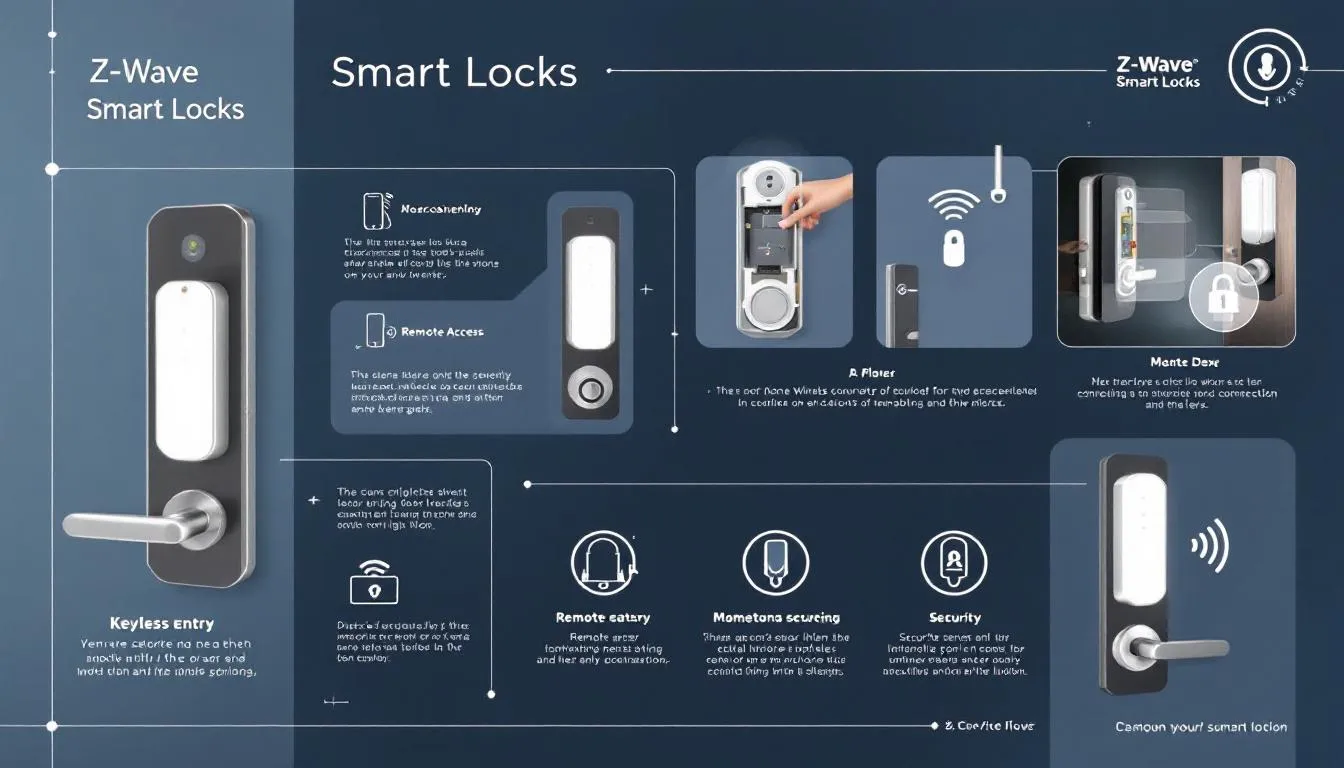
Z-Wave smart locks come packed with features designed to enhance security, convenience, and integration with your smart home. The lock unit itself is engineered for easy installation and reliable performance, making it suitable for a wide range of doors and compatible with most smart home systems. Keyless entry and remote control are standout features, allowing you to lock and unlock your doors through a smartphone app, making them perfect for both residential and commercial properties. These locks are particularly beneficial for vacation rentals and multifamily properties, where managing physical keys can be a logistical nightmare.
Z-Wave smart locks are designed with versatility and user convenience in mind, making them well-suited for both residential and commercial applications. Common features include:
- Emergency physical keys for backup access in case of system failure or battery depletion
- Multiple unlocking options, such as numeric keypads, fingerprint sensors, and in some models, touchscreen interfaces for PIN entry. It’s worth noting that touchscreen pads may face responsiveness issues in cold climates and may lack tactile feedback, which can affect user experience.
- Smart device integration, allowing the lock to work in harmony with other connected devices, such as lights, thermostats, and alarm systems—creating a seamless and automated security ecosystem.
Enhanced Security
Security is a top priority for any connected locking system, and Z-Wave smart locks are engineered to deliver strong protection. Utilizing advanced AES-128 encryption, these locks safeguard all network communications, significantly lowering the risk of unauthorized access or cyber intrusion.
A key advantage is secure inclusion, which ensures that new devices are added to the Z-Wave network in an authenticated and protected way—bolstering overall system integrity.
Z-Wave smart locks also provide multiple layers of access control, including PIN codes, fingerprint authentication (on some models), and remote access management. Businesses can easily assign, monitor, or revoke user access through a centralized system, enhancing operational control and accountability.
Whether managing a commercial facility or a multi-unit residential property, these features ensure that your smart lock solution is not only intelligent—but highly secure.
Battery Life
One of the most practical benefits of Z-Wave smart locks is their exceptional battery efficiency. Leveraging low-power radio frequency communication, Z-Wave locks can operate anywhere from several months up to multiple years on a single set of batteries—depending on usage and model.
This extended battery life minimizes maintenance demands, making Z-Wave locks a smart choice for vacation rentals, multifamily properties, and remote locations where routine check-ins may be impractical. Property managers benefit from fewer service calls and reduced operational costs, while tenants and guests enjoy uninterrupted access.
Compared to Wi-Fi-based smart locks, which typically consume more power, Z-Wave models deliver a hassle-free, low-maintenance solution—ideal for commercial and residential applications alike.
Integration with Smart Home Systems
Z-Wave smart locks are built for full integration within smart home ecosystems, making them a powerful choice for businesses and property owners seeking advanced access control. These locks effortlessly sync with smart lighting, security cameras, thermostats, and other Z-Wave-compatible devices, enabling automated routines—like locking doors when the system is armed or unlocking them as you arrive.
With mobile app control, users can remotely manage access, receive instant alerts, and issue time-limited codes to service providers like cleaners or dog walkers. This real-time flexibility is ideal for property managers who need to grant and revoke access without being on-site.
Z-Wave smart locks also support voice control via Amazon Alexa and Google Assistant, offering hands-free operation and easy integration into existing voice-activated environments. As part of a unified smart home or building automation system, Z-Wave locks provide scalable, secure, and convenient access management—perfect for residential, rental, or commercial use.
Z-Wave Plus Benefits
Z-Wave Plus technology takes smart lock performance to the next level, offering a suite of enhancements that make your home more secure, connected, and convenient. With Z-Wave Plus, smart locks benefit from S2 encryption, delivering advanced protection against unauthorized access and ensuring your front door remains secure. The increased range of Z-Wave Plus means your lock can communicate reliably with your smart home system, even in larger homes or properties with challenging layouts.
Remote access is another standout feature, allowing you to control your smart lock from anywhere using your smartphone or smart home hub. This means you can grant keyless entry to family, friends, or service providers without needing to be at home. Z-Wave Plus also enables seamless integration with other Z-Wave devices, such as smart lights and thermostats, so you can create custom automation routines—like having your lights turn on automatically when you unlock your door.
Devices like the Schlage Connect Smart Deadbolt are designed with Z-Wave Plus for reliable, efficient performance, making them an ideal choice for anyone looking to enhance their smart home security and enjoy the convenience of modern smart home automation.
Installation and Setup
Installing a Z-Wave smart lock is a straightforward process, but there are a few key considerations to keep in mind. First, ensure that your door’s cross bore holes are 2 ⅛ inches in diameter to accommodate the lock hardware. Z-Wave smart locks can be installed as retrofits over existing deadbolts or as full replacements, with the latter offering a slimmer profile and more features.
For a successful installation:
- Install the latch in the unlocked position before securing it.
- Keep the lock within 5 feet of the Z-Wave controller during installation for proper signal transmission.
- Once installed, program a master PIN code before setting up additional user codes.
The final step in the installation process involves enrolling the smart lock into your Z-Wave network. This can be done by pressing a button on the lock after setting the controller to enrollment mode. If you ever need to remove or unlink the lock from your Z-Wave network, you can use the exclusion mode on your Z-Wave controller. Following these steps ensures a smooth setup, allowing you to enjoy the benefits of your new Z-Wave smart lock without any hiccups.
Benefits of Using Z-Wave Smart Locks
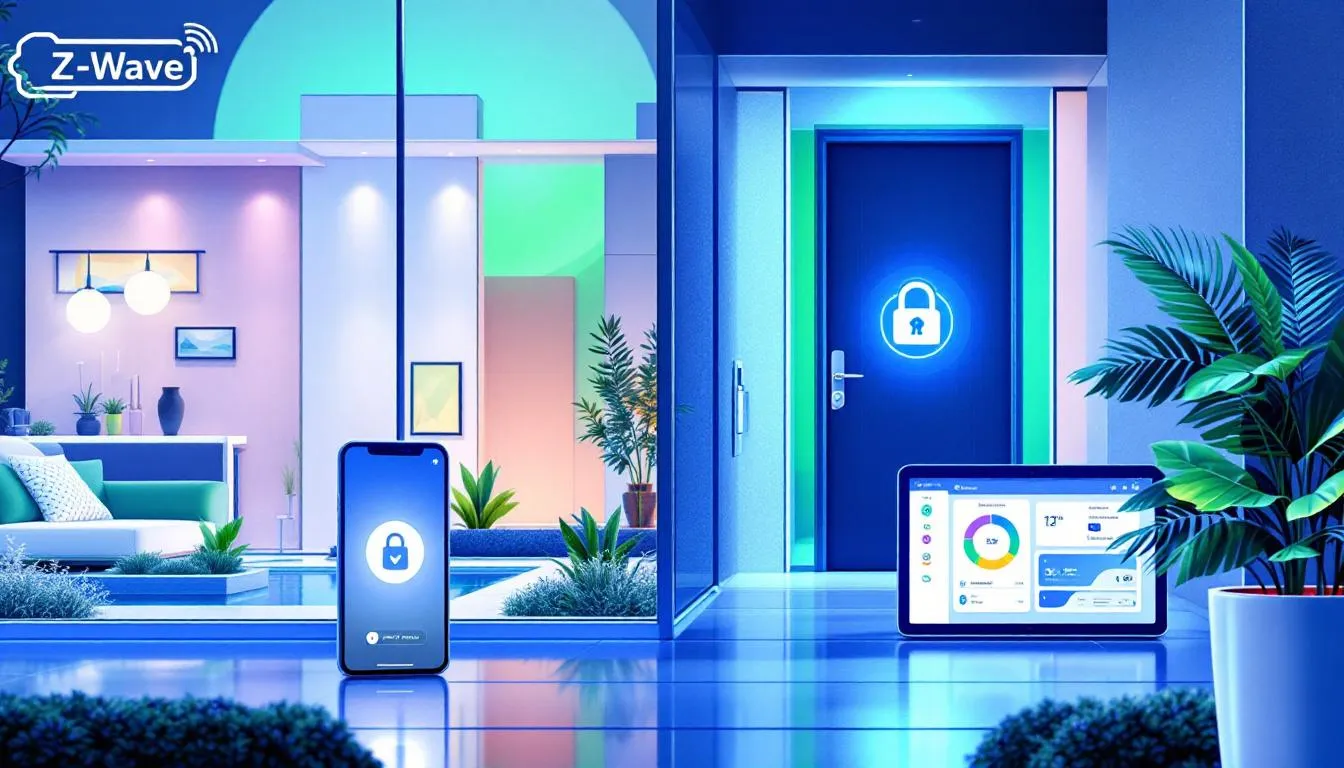
The benefits of using Z-Wave smart locks extend beyond just security and convenience. One of the advantages is the increased range and reliability of Z-Wave networks, which can cover larger distances than typical Wi-Fi networks. This makes them particularly effective in expansive properties where Wi-Fi signals may struggle to reach.
Additionally, Z-Wave smart locks offer exceptional battery life, with some models lasting several years on a single set of batteries. This efficiency is especially beneficial for properties that are unattended for extended periods, such as vacation rentals.
Advanced features like automatic locking and geofencing further enhance the convenience and security of these locks, making them a valuable addition to any smart home.
Use Cases for Z-Wave Smart Locks
Z-Wave smart locks are versatile and can be used in a variety of settings. In multifamily residences, they:
- Facilitate seamless entry for maintenance staff without the need for physical keys, enhancing both convenience and security.
- Allow property managers to control access remotely.
- Enable property managers to provide temporary codes for tenants and guests as needed.
For vacation rental properties, Z-Wave smart locks offer peace of mind with:
- Long-lasting battery performance
- The ability to provide temporary access codes for guests
- Suitability for properties with multiple doors or high turnover rates
- Minimizing the hassle of key exchanges
- Ensuring secure access
Z-Wave Smart Locks in Multifamily and Vacation Rental Properties
Z-Wave smart locks are transforming access control in multifamily and vacation rental properties, offering unmatched convenience and security for both property managers and residents. With Z-Wave technology, managing keys becomes a thing of the past—keyless entry allows tenants and guests to access their units using secure codes, reducing the risk of lost or stolen keys.
Remote access and control mean property managers can monitor and manage entry from anywhere, granting or revoking access as needed without being on-site. This is especially useful for providing temporary access to guests, maintenance staff, or service providers like dog walkers. Z-Wave smart locks can also be integrated with other smart devices, such as thermostats and lights, to create a seamless smart home automation system that enhances the rental experience.
For example, a property manager can set up the system so that when a guest unlocks the door, the lights turn on and the thermostat adjusts to a comfortable temperature. This level of control and convenience not only improves security but also adds value for tenants and guests, making Z-Wave smart locks a smart investment for any rental property.
Common Issues and Troubleshooting
While Z-Wave smart locks are generally reliable, users may occasionally encounter issues. Common problems include connectivity issues, unresponsive locks, and low battery alerts. If a lock goes offline or becomes unresponsive, the first step is to check the batteries and replace them if necessary.
In some cases, a lock may be defective, particularly if it fails to respond to keypad inputs. Troubleshooting may involve checking the lock’s alignment, ensuring that the hub is within range, and verifying that the lock is properly enrolled in the Z-Wave network.
Regular maintenance and timely battery replacements can help prevent most issues, ensuring smooth operation of your Z-Wave smart lock.
Choosing the Right Z-Wave Smart Lock
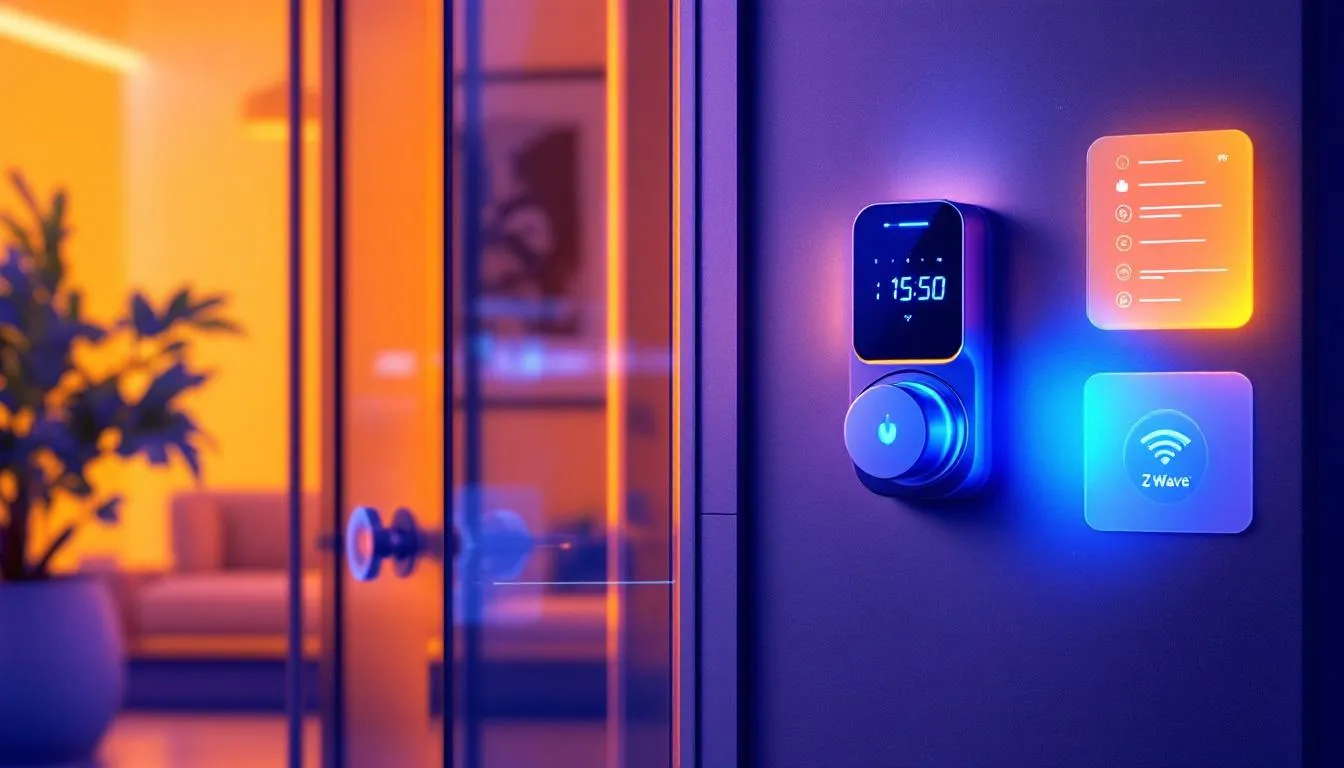
Selecting the right Z-Wave smart lock depends on your specific needs and preferences. The Schlage Connect Smart Deadbolt, for example, offers:
- Advanced features like Z-Wave Plus compatibility, voice control, and keyless access
- A best-in-class BHMA durability rating
- A limited 3-year warranty on electronic components
When choosing a Z-Wave smart lock, you can expect reliable performance, straightforward installation, and consistent security features that meet industry standards.
These features make it a top choice for many users and works great.
Another excellent option is the Philips 4000 Series Smart Deadbolt, which is certified to ANSI/BHMA Grade 2, indicating high security standards. Its ease of installation, requiring just a screwdriver, makes it an attractive choice for those looking for a hassle-free setup.
Evaluating these features and considering your specific requirements will help you choose the perfect Z-Wave smart lock for your home.
Summary
In conclusion, Z-Wave smart locks offer a compelling blend of security, convenience, and integration with smart home systems. Their reliable connectivity, extended battery life, and advanced features make them an excellent addition to any modern home. Whether you’re managing a single property or multiple rentals, Z-Wave smart locks provide a robust solution for ensuring secure and convenient access. Consider upgrading to a Z-Wave smart lock today and experience the future of home security.
Frequently Asked Questions
How does Z-Wave technology differ from Wi-Fi in smart locks?
Z-Wave technology differs from Wi-Fi in that it operates on a lower frequency range and utilizes a mesh network, providing improved connectivity and lower interference for smart locks. This makes Z-Wave more reliable for home automation devices compared to traditional Wi-Fi.
Can Z-Wave smart locks be integrated with existing smart home systems?
Yes, Z-Wave smart locks can indeed be integrated with existing smart home systems, enabling seamless control and automation through various apps and voice assistants.
How long does the battery last in a Z-Wave smart lock?
The battery in a Z-Wave smart lock can last from several months to several years, depending on factors like usage and model. It’s important to monitor usage to ensure optimal battery performance.
What should I do if my Z-Wave smart lock becomes unresponsive?
If your Z-Wave smart lock becomes unresponsive, start by checking and replacing the batteries. If it remains unresponsive, verify its alignment, proximity to the hub, and enrollment in the Z-Wave network.
What are some popular models of Z-Wave smart locks?
Popular Z-Wave smart lock models include the Schlage Connect Smart Deadbolt and the Philips 4000 Series Smart Deadbolt, noted for their advanced features and easy installation.
